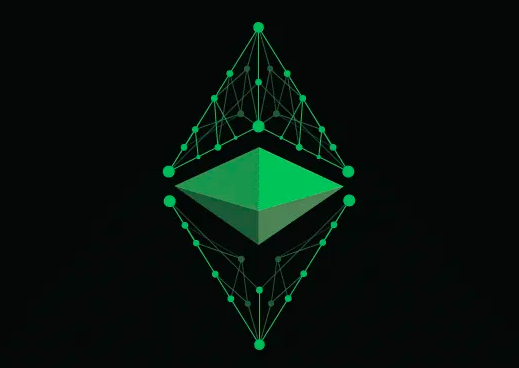1. The essence of stablecoins: price anchoring
Stablecoins sound like the "fixed deposit" in the cryptocurrency industry? Actually, it's more like a supermarket prepaid card.
Have you ever bought a 100 yuan stored value card from a supermarket? Even if you wait for six months to finish, it's still worth 100 yuan. The principle of stablecoins is similar: their price is always anchored around $1, and no matter how the market fluctuates, everyone believes they are worth $1. Take USDT and USDC, two currencies that currently hold over 90% market share, as an example. Their stablecoins are exchanged 1:1 with the US dollar.
Q: Why can stablecoins maintain '1 dollar'?
(Anchoring mechanism: a system design that ensures the stability of stablecoin prices near the target value through real asset reserves or algorithmic regulation.)
Behind every stablecoin, there is a $1 or equivalent asset as support. When someone buys stablecoins, the corresponding US dollars are locked into the asset pool. If someone wants to redeem, the platform will take out the $1 from the pool. This 1:1 "commitment" mechanism is like a tension rope, firmly pulling the coin price around $1.
Q: What if the price fluctuates?
(Arbitrage mechanism: When the price of a stablecoin deviates from its anchor value, traders earn the difference by buying low and selling high, while also helping to restore the stability of the coin price.)
For example, if the price drops to 0.98 US dollars, arbitrageurs will buy at a low price and then go to the official website to exchange for 1 US dollar, earning 2 cents in the middle. It is these arbitrage operations that help the market automatically correct prices.
2. Three mortgage methods and representative projects
Although they all look like "1 dollar" on the surface, the methods behind it are actually different.
There are three ways to generate stablecoins, just like houses with reinforced concrete, wooden structures, and building blocks, each with its own advantages and disadvantages.
Q: How does fiat currency collateralization work?
Users deposit US dollars and the platform issues stablecoins of equivalent value. This is how USDT and USDC operate. You are essentially exchanging money for a digital stored value card, which can be redeemed at any time. The biggest feature is simplicity and stability, but you have to believe that this company really has money on its books. Generally, both USDT and USDC companies will deposit their assets in banks or purchase short-term treasury bond for profit.
Q: What is the difference between encrypted collateral types?
For example, for DAI, users need to first mortgage Ethereum worth $150 in order to exchange for $100 of DAI. If Ethereum falls too hard, the system will force liquidation and reclaim collateral. The advantage is that no one can use your collateral, and the risk lies in large price fluctuations and low efficiency.
Q: Does algorithmic sound like black technology?
It sounds smart, but it's actually very dangerous. UST attempts to control supply and demand through code without requiring any reserves. But after the collapse in 2022, the market basically lost confidence in this type of model.
3. Business Model: Earning Interest Money
You may ask, how do these "digital currency companies" make money without charging fees or paying interest?
These companies are actually like 'banks that don't give you interest'. You exchange 1 dollar for 1 stablecoin, and this 1 dollar becomes their funds. They use this money to buy US treasury bond bonds or do short-term borrowing, and steadily collect interest.
Q: Is this profit model stable?
Very stable. Assets managed by USDT exceed $150 billion, and even if they only earn 4% interest, it is still $6 billion per year. And for users, their money is zero cost - they don't have to pay interest and can recover it at any time.
Q: Isn't this making money with everyone's money?
That's true. This is the implicit business logic of stablecoins: what you give them is "borrowing", and they use it for "capital preservation and financial management", but you can't get any returns, it's all up to them to earn.
4. Application scenario: Solution to real-life pain points
Stablecoins are not "speculative coins", they are truly digital tools that can be used.
Q: What daily problems does it solve?
Transfer, especially cross-border payments, is the most intuitive use. When trading on the chain, it only takes a few seconds to transfer money, and the transaction fee is almost negligible. Compared to the traditional bank's few day deposit and tens of yuan handling fee, the stablecoin experience is more like "transferring money to foreign friends through WeChat".
Q: What other uses does it have besides payment?
(High inflation hedging: In countries with severe currency depreciation, residents avoid inflation risks by holding stablecoins.)
In some high inflation countries, such as Argentina, people will exchange their income for USDT as a safe haven, just like in the past when people bought gold bars or deposited US dollars. It serves as a 'digital dollar' locally.
Q: What about in the virtual world?
DeFi (Decentralized Finance): A financial ecosystem built on a blockchain, with stablecoins often serving as the underlying trading medium. )
In DeFi (decentralized finance), stablecoins are the base currency, just like the "Chinese yuan" or "US dollar" in our real life. Almost all on chain lending, insurance, and investment cannot do without it.
5. Global regulatory landscape
To become a 'compliant asset', stablecoins must cross the regulatory threshold.
Q: How does the United States manage it?
(Genius Act: A stablecoin regulatory bill drafted by the United States that requires strong reserves and redemption guarantees.)
Through the Genius Act, stablecoin companies are required to hold high-quality reserves (such as cash or short-term US bonds) and are not allowed to invest in other risky assets at will. Simultaneously emphasizing transparent disclosure and user priority payment rights.
Q: What is the focus of the European Union?
MiCA (Crypto Asset Market Act): A comprehensive regulatory framework for cryptocurrencies introduced by the European Union, in which stablecoins are an important part. )
The European Union has introduced the MiCA Act, which prohibits stablecoin interest payments, restricts its launch on certain platforms, strengthens anti money laundering and data compliance, with the goal of reducing financial system risks.
Q: Is the approach different in Asia?
(Hong Kong Sandbox: A mechanism that allows companies to test innovative financial products in a controlled environment, commonly used for stablecoin pilots.)
Hong Kong and other places are more concerned about how to "make good use of" stablecoins, promote cross-border payments and digital clearing. Here, regulation is more like a green light pilot rather than a red card ban.
6. Exploration of Hong Kong stablecoins: a bridge between the Hong Kong dollar and the Chinese yuan
Hong Kong wants to use stablecoins to build a bridge to the future of Asian finance.
Q: What are the stablecoin projects in Hong Kong?
Multiple projects are being tested in regulatory sandboxes, including HKD stablecoins and offshore RMB stablecoins. The goal is to be used for cross-border trade settlement, small payments, and other scenarios.
Q: Why is Hong Kong promoting the stable currency of Hong Kong dollar/Chinese yuan?
Traditional cross-border payments have high costs, slow arrival times, and complicated procedures. Stablecoins can be credited within seconds and are transparent and traceable. By piloting its own stablecoin, Hong Kong hopes to establish an efficient digital payment clearing network in Asia.
If you want to further understand "Hong Kong dollar stablecoin", "RMB cross-border on chain payment" or the Hong Kong sandbox system, please follow the next article, where we will break down the unique design and challenges of the Hong Kong version of stablecoin in detail.







